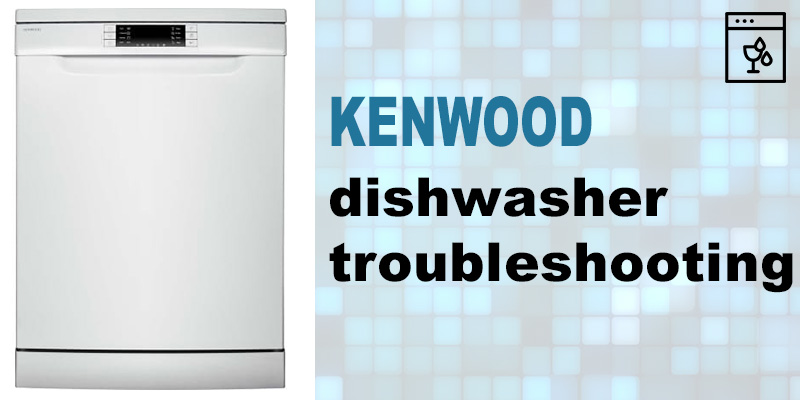
Kenwood makes a range of consumer electronic and communications products. The company founded in 1947 became a part of De’Longhi in 2001. It manufactures full size and slimline, intergrated and freestanding dishwashers.
Kenwood dishwashers are reliable, but sometimes an issue can occur. In this case check the symptom in the troubleshooting list below.
Kenwood KDW series, KID series dishwasher troubleshooting
| Problem | Possible Causes | Remedy |
|---|---|---|
| The dishwasher does not start. | The door is not properly closed. | Close the door firmly. |
| The unit is not connected to the mains. | Insert the plug to the mains. | |
| The unit is not switched on. | Press the "on" button and select a programme. | |
| The drain pump is not working properly. | Fault code E4 - The anti-flooding system has operated. | Disconnect from the mains. Disconnect the water inlet. Call a qualified technician. |
| Detergent residue is left in the dispenser at the end of the programme. | The detergent dispenser was still damp when detergent was added. | Make sure the dispenser is dry before adding detergent. |
| The detergent dispenser lid cannot be closed properly. | Clogged detergent residue is blocking the catch. | Clean the catch. |
| Knocking noise in the wash cabinet. | A spray arm is knocking against an item in a basket. | Interrupt the programme, and rearrange the items which are obstructing the spray arm. |
| Smearing appears on glassware and cutlery. | The rinse aid dosage is set too high. | Adjust the dial of the rinse aid dispenser to a lower setting. |
| Dishes, cutlery and glasses are not dry. | The amount of rinse aid may be insufficient, or the rinse aid reservoir is almost empty. | Replenish the reservoir, adjust the rinse aid dispenser dial to a higher setting or change the brand of rinse aid. |
| Crockery was taken out of the dishwasher too soon. | Leave the crockery in the dishwasher until you hear the audible sound. | |
| White residue is visible on cutlery and crockery, clouding occurs on glassware; film can be wiped off. | Not enough rinse aid was used. | Replenish the reservoir, adjust the rinse aid dispenser dial to a higher setting or change the brand of rinse aid. |
| There is not enough salt in the salt reservoir. | Fill the salt reservoir. | |
| The salt reservoir cap has not been screwed on correctly. | Ensure that it is screwed back on correctly. | |
| Unsuitable detergent has been used. | Change your detergent. Use a dishwasher standard powder detergent. | |
| The salt consumption setting is too low. | Select a higher salt consumption setting. | |
| Glassware is dull and discoloured; film cannot be wiped off. | The glassware is not dishwasher proof. The surfaces are affected. | Wash the non-dishwasher proof glassware by hand. |
| Tea or lipstick stains have not been completely removed. | The wash temperature of the selected programme was too low. | Select a programme with a higher wash temperature. |
| The bleaching effect of the detergent used is too low. | Change your detergent. | |
| Forgot to pre-rinse or remove the stains with a napkin prior to washing. | Pre-rinse or remove the stains with a napkin prior to washing. |
